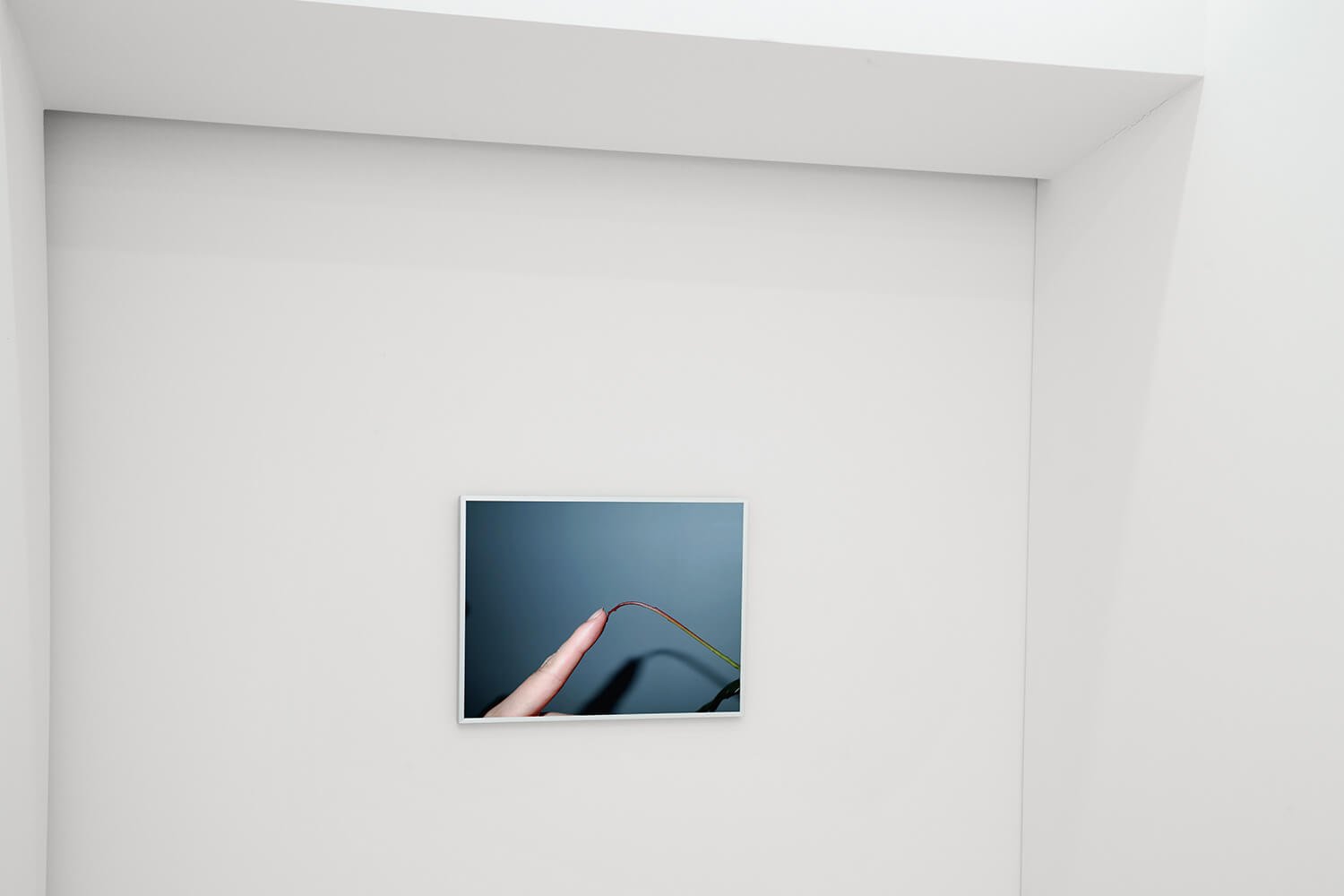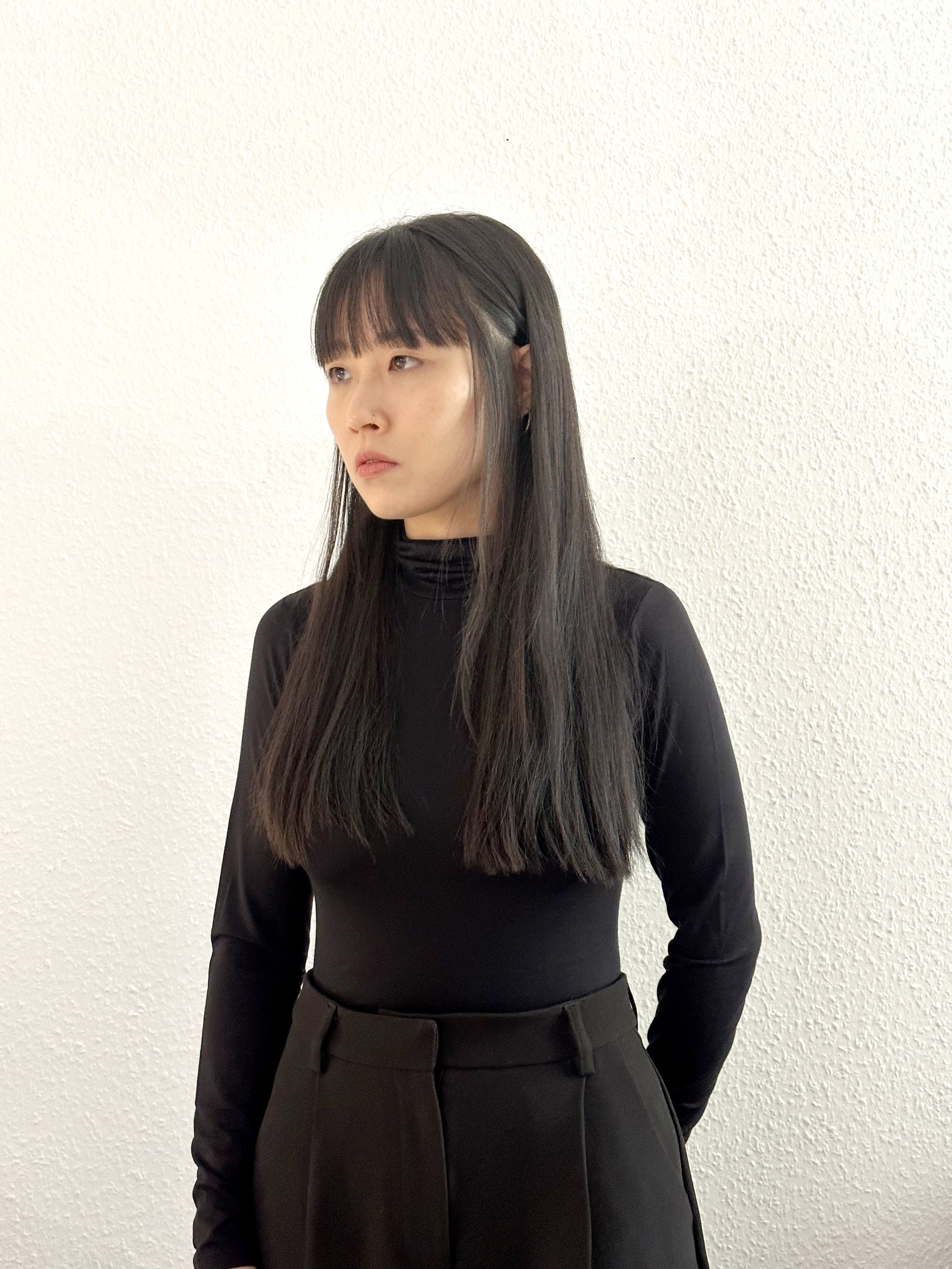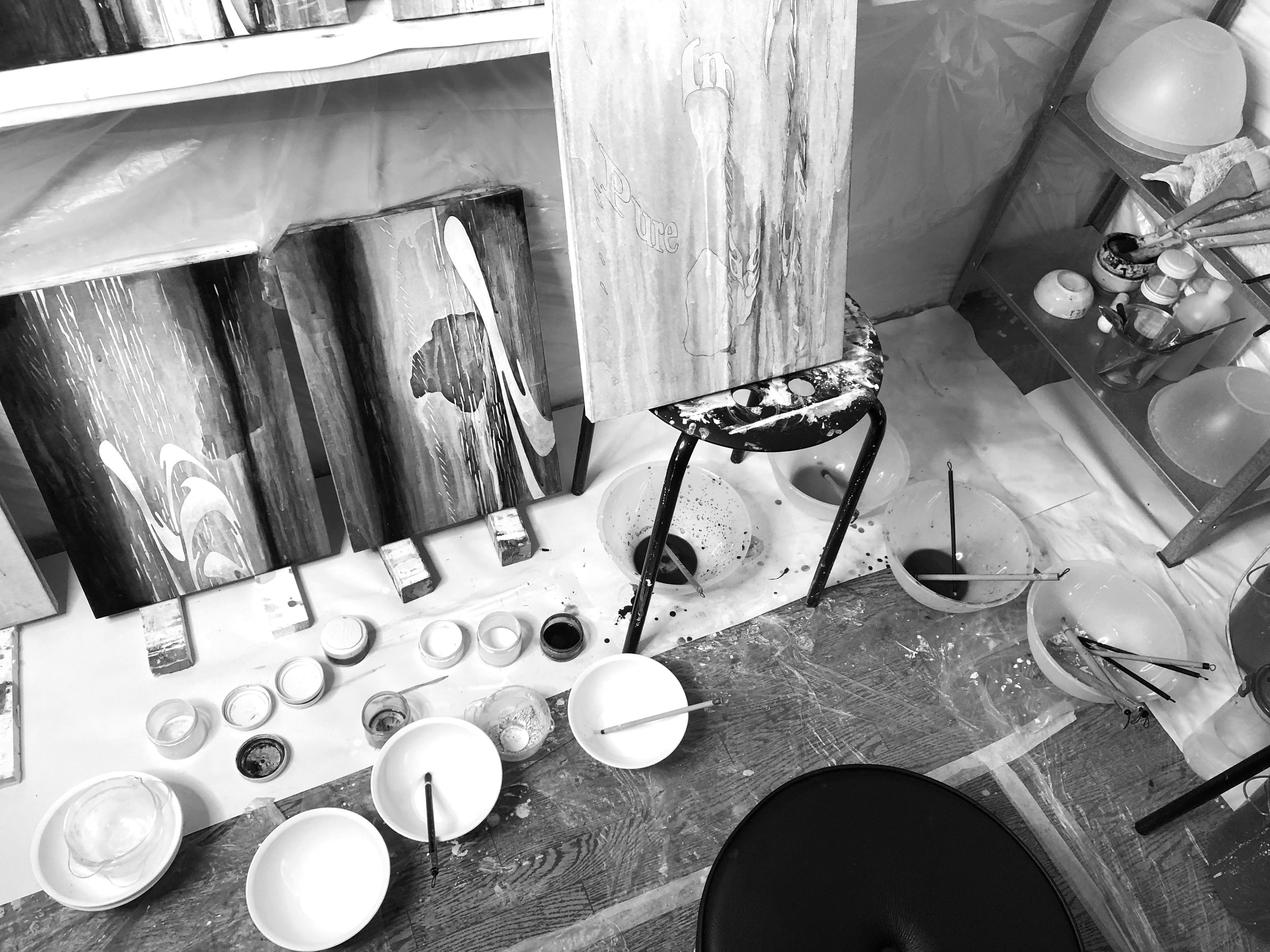Sun Jaegal
Sun Jaegal (b.1984) is a Berlin-based South Korean artist with an interdisciplinary practice incorporating painting, graphic design, photography and video installation.
Sun Jaegal is spotlighted in the New Voices series, which highlights emerging artists who showcase their art on ArtConnect.
In the art of Sun Jaegal, text is not confined to words on a page or screen. Instead, she interprets the body, matter and the everyday as forms of “text-scapes” that can be read, rearranged and recommunicated in order to craft glimpses of longed-for worlds.
When viewing Jaegal’s work, one may wonder whether they are peering into future landscapes, parallel universes or simply dreams. Departing from personal experiences of bodily discomfort, her work is an attempt to fill the void of the present and escape to a utopian “beyond” - somewhere where everything can be reinvented. Jaegal’s recent practice has been devoted to traditional Korean painting techniques, which in their repetitiveness bring a meditative and spiritual sense to her otherworldly work. While comforting in their promise of hope, the landscapes developed in Jaegal’s work are raw, vulnerable and honest about the sadness which informs them. By distorting texts collected from daily life, Jaegal writes narratives that guide the viewer and assures them that their sadness can be the driving force behind deeper connection.
Sun Jaegal was invited to give our readers an insight into her artistic process and the messages behind her work by answering a few questions.
Sun Jaegal, Island Blues, 2021
Can you introduce yourself and your work to our readers?
I am currently living and working in Berlin, Germany. My educational background includes both Master’s and Bachelor’s degrees in Graphic Design from Seoul, Korea, followed by further studies in Visual Communication at Royal College of Art in London. In my artistic practice, I enjoy experimenting with various interdisciplinary media, ranging from graphic design to video installation. Recently, I've focused primarily on traditional Korean painting, and have been incorporating personal writing and distorted text forms, along with photography of my everyday objects.
What inspired you to become an artist?
I can't say that there was any particular inspiration or event that led me to become an artist. I actually never thought that I would become one. However, there was a certain moment of realization later in my life when a side activity that used to soothe my everyday life slowly grew into my main activity. At first, I experienced subconscious resistance to practicing art, but as I devoted more energy to it, it began to take on more importance in my life. I became desperate for my works, and looking back, I always felt like an artist in a way, as many of us do in some vague sense. My latest contemplation concerns what it means to be a full-time artist. I am still figuring out the meaning of this term as it feels quite strange to introduce myself as a professional artist, but I aspire to be more dedicated to my works to be clearer about it and myself.
“I strive to be honest about the most banal feelings of loss, sadness, and loneliness, and to create works that can serve as a meeting place for my sadness and someone else's sadness.”
You mention various artistic disciplines in your artist statement - graphic design, video installation, painting and text. How do you choose which medium is appropriate for a certain project?
My choice of medium is often influenced by the project's overall aesthetic and emotional impact. If it’s not particularly asked, I’d prefer incorporating different mediums in a single project especially to achieve the rhythmical flow in a space. There usually is a main medium that has been either a screen or a painting together with small sculptural objects or photographs circling around and complementing the main piece. I want to explore more on the spatial quality of installation and sculptural objects to expand my own boundaries.
What are the main themes of your work? What does your work aim to touch on?
The main themes of my work revolve around escapism and the state of exile. My work often delves into the everyday impressions and the fundamental escapism that stems from my bodily condition and the feeling of desolation in my own country. I'm often drawn to the idea of going somewhere else and being someone else, which may seem cliché, but I want to stay true to the things that are closest to my heart. I strive to be honest about the most banal feelings of loss, sadness, and loneliness, and to create works that can serve as a meeting place for my sadness and someone else's sadness, as Mark Rothko once said, “I hope that through my work, we can both feel a little less sad, a little less alone.”
Sun Jaegal’s studio.
You describe your painting as a form of “transposed landscape”. What do you mean by this?
Anxiety about my body shadows everyday life of mine. I've struggled with various conditions throughout my life, particularly severe eczema and its complications. I've always felt like I'm "not here," and I often imagine myself in another place, perhaps a paradise where everything is perfectly serene, without any pain or worries about fading away. My creative process of capturing, distorting, and reconstructing text materials is a reflection of my drive to an endless search for comfort. The perpetual obsession with letters stems from a deep fear of death that propels me beyond the present moment. Text becomes a "transposed-body" that replaces the agony of my actual body, while painting becomes a "transposed-landscape" where my alternative body resides, depicting my yearning for "the beyond" or my struggle to grasp the fleeting absurdity of my reality.
You also describe your process of painting as meditation, mentioning traditional Korean painting techniques. Can you tell us about the spiritual layers of your practice?
I've always been drawn to the labor-intensive process of Korean painting and the unique qualities of the materials used. The fragility of the paper and the subdued texture and color palette allow me to delve deeper into the themes that I explore in my work. I find the work to be a meditative practice that provides solace, especially when I work on larger canvases, it feels like I am creating very long writings. With each brushstroke, I'm caressing every part of the words and imbuing them with a poetic quality. It's similar to the endeavor of transcribing the Bible over and over again, like an enchantment. The process of making contributes to a sense of contemplation and reflection. Through my work, I seek to connect with something deeper and to find a sense of peace and comfort.
Sun Jaegal, Melodramatic Reflection, 2021
Text is often incorporated into your work, such as in One Million Lovers and Melodramatic Reflection. What is it about words that draws you in?
Even in pieces where they may not be immediately recognisable, text serves as the foundation of my work. I have always been captivated by the rational quality of written language, and the way it can make ambiguous moments more clear. This aligns with my ongoing struggles to grasp the fleeting absurdity of reality, and my efforts to make those evanescent moments more concrete and clear by painting and writing about everyday impressions. Arthur Rimbaud's words, “I turned silence and nights into words. What was unutterable, I wrote down, I made the whirling world stand still," resonate deeply with me. Through my work, I strive to capture the fleeting and intangible aspects of life, and distill them into something concrete and lasting. I feel words have a powerful ability to transform and transport, which is why they feature so prominently in my work. When I am immersed in the process of collecting and writing text, I find a rare comfort in the rush of excitement it brings. It allows me to flee to something smooth and better, to dream of a land that may not even exist. Through my paintings, I seek to embrace this ghostly land that I have created, with its distorted and broken, scattered text.
In a more recent series of yours, Island Blues, there is a strong sense of longing. How can art help us reach towards worlds not actually present?
Fully immersing yourself in the experience of art, whether through creation or observation, can transport you to a different realm. During moments of intense artistic creation, I experience a meditative, almost transcendental state. Similarly, the breathtaking experience of viewing another artist's work can leave a lasting impression, as I personally experienced while gazing at Francis Bacon's work at the Centre Pompidou. The encounter with an artwork that deeply resonates with your sensibilities can often result in a profound disconnection from reality, creating an alternate space where only you and the artwork exist. I think such transformative experiences have the power to make the challenges of the present moment less unbearable.
“When I am immersed in the process of collecting and writing text, I find a rare comfort in the rush of excitement it brings. It allows me to flee to something smooth and better, to dream of a land that may not even exist. Through my paintings, I seek to embrace this ghostly land that I have created, with its distorted and broken, scattered text.”
Sun Jaegal, Island Blues, 2021
Can you talk about a specific piece that holds significance for you and why?
In 2021, I created a series of large-scale paintings titled "ND" (Naked Dance), inspired by a brief piece of writing that remains deeply meaningful to me. It is not an exaggeration to say the writing sums up my whole practice. "ND_01" is the initial painting from this series. The writing that inspired this series reads: “double sided island in fantasmic fog, when it turns blue let’s dance naked.”
What's next for Sun Jaegal? Anything exciting coming up?
I'm most thrilled about the prospect of establishing my studio in the Lichtenberg district of Berlin and getting ready for an upcoming group exhibition in Seoul this April. I believe that now is the time for me to fully explore the city of Berlin and see how its vibrant arts scene will impact both myself and my art practice.
Interview & Editorial by Ollie Dougherty
See more of Sun’s work

Sun Jaegal, Island Blues, 2021

Sun Jaegal, Island Blues, 2021

Sun Jaegal, Island Blues, 2021
New Voices highlights emerging artists who showcase their unique perspectives and innovative techniques on ArtConnect. Applications are accepted on a rolling basis. If you would like to be featured in a personal interview on ArtConnect Magazine, read through the open call and apply here.






